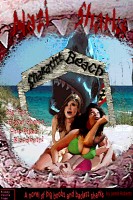Turn-of-the-century London was deemed the cradle of civilization, the place of Society--that anomalous animal that Oscar Wilde castrated with his pen. The wealthy, noble, or otherwise important who had charm were taken into London society, usually by busybody hostesses with no greater use for their scant brains and plentiful money; to no longer be invited to parties, to be excommunicated from London society, was as frightening as death to some. Perhaps when one's personality has been substituted by social banter to lose society is death.
So much for London. Now about the werewolf. That is Dr. Glendon, a very serious biologist with a too-severe work ethic. He journeyed to Tibet and acquired two things: a rare flower never before studied under lab conditions and the bite of a werewolf. He has filled his life with his obsession with flowers, not the least of which is his much younger wife. She is indeed a flower, pretty with gowns always reminiscent of floral petals and hats of the floral center. She is being neglected for the new flower, about which Glendon is eager to study and publish his findings lest anyone get in before him. The more obsessivedly he studies his plant, the further he withdraws from society; the further he withdraws from society, the more he seems to become a monster, an outsider, the other. And once the full moon rises, his monstrous quality becomes literal.
Glendon's major flaw is not his distance from London society, but his distance from society in general. He obsesses over his work and never talks to anyone. He makes clear that he's frightened his data will be stolen from him; perhaps he keeps silent entirely out of scientific ambition. Yet, if he would confide in his wife or his professional friends, he may have been helped before the lycanthropy overpowered him. He confides in no-one. The less he confides, the more distant people become; the more distant they become, the more irascible he becomes and the more distance still is put between he and his social circle. This is especially the case with his wife. Every other character in the film is social; they all have someone to talk to or confide in. Even the drunken old ladies who appear for comic relief, however neglected and abandoned, have each other. Other people keep us human. But Glendon walks alone. He is, yes, a lone wolf.
London society takes the form of a circle of social elites generally organized around a busybody socialite named Ettie Coombes with more gusto and money than brains. She's responsible for the forward motion, the pace, the smooth linking of much of the film and its characters; without her the film would be very plodding indeed. Ettie, as the symbol of London society, is about the polar opposite of Glendon. She wants to be surrounded with interesting people constantly; she has no thoughts of her own, but delights in everyone else's. Not surprisingly, Ettie is the first person to see Glendon as a wolfman. As Dr. Glendon withdraws from society, she begins hooking Mrs. Glendon, Lisa, up with Paul Ames, a childhood sweetheart and much more social person. Paul becomes the pseudo-hero, hunting the wolfman and trying to steal Dr. Glendon's wife, without ever realizing both actions are bound up together. He is the cause of Glendon's further distancing from his wife.
One imagines Dr. Glendon must have been enjoyable to be around at some point. His wife is not really a trophy wife. She's younger, but she isn't stupid. She really loves her husband. She is, however, rather juvenile. The film takes place largely over a four day period. One would think her husband had been neglecting her for months by the way she reacts, but he's only just begun studying this plant. When he asks her to be patient, it's hardly a major request, even if he did just return from a probably lengthy voyage to Tibet. Ettie's orchestrations and the presence of Paul are largely responsible for Lisa's increasing discontent with Glendon. Were she more patient and understanding, Glendon may have confided in her. His jealousy over Paul and her need to constantly be in society makes him more distant.
Such is the tragedy of Werewolf of London. It is a tale of two monsters, the werewolf and London society. My sympathies lie squarely with the tragic monster of the werewolf, a sensitive man who loves flowers, science, and his wife. I have said nothing of the real villain of the film, Dr. Yogami, the original werewolf who is also after the plant for its medicinal properties as the sole antidote to lycanthropy and steals the plant from Glendon. He curiously gets sucked into London society and is much more clever at playing social. He is never suspected. He is more peripheral and a bit of a contrast to Glendon, but essentially in the same situation: a werewolf desperate for a cure.
As is generally the case with Universal horror films, Werewolf of London is a character-based story. It has the sensitivity to individual personality of a play; not coincidentally, Universal scripts were generally based upon plays or written by playwrights. The horror of a monster invades seamlessly the character dramas. The fascinating characters of this story, particularly the upbeat Ettie and the decidedly lowbeat Glendon, creates a strong and deep horror film that really holds up. Holds up? Forgive me, I mean to say, "They don't make 'em like this anymore."
9/10
Incidentally, Werewolf of London was the first major Hollywood werewolf picture.
Help make this site more interesting through discussion:
Werewolf of London (1935)
Author: Jared Roberts
Subscribe to:
Post Comments (Atom)

0 comments:
Post a Comment